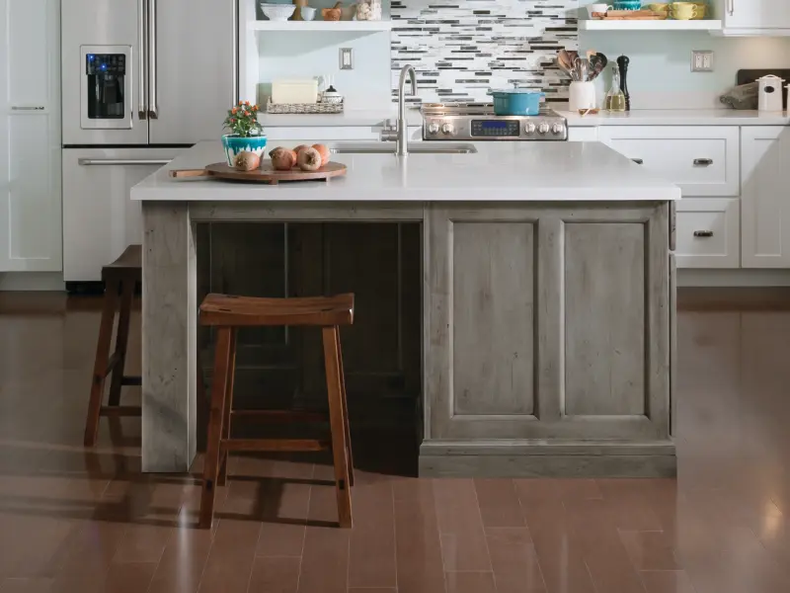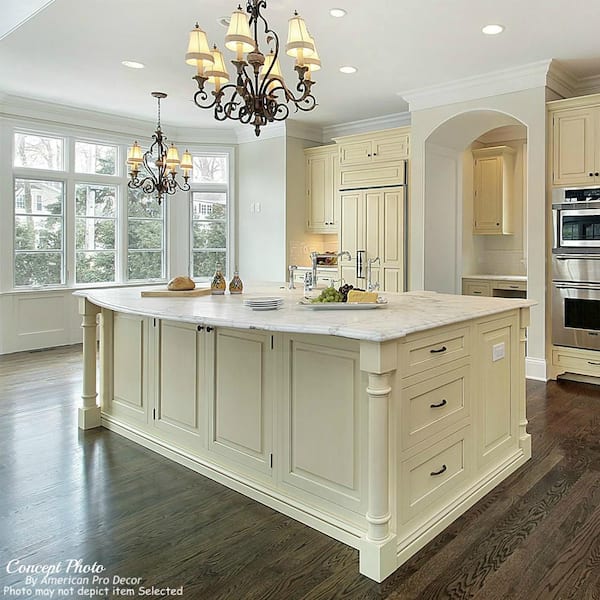Kitchen Island Legs: Add Performance and Design to Your Space
Kitchen Island Legs: Add Performance and Design to Your Space
Blog Article
An Overview to Selecting the Ideal Kitchen Area Island for Your Home
Picking the perfect cooking area island is a multi-faceted choice that can considerably affect both the capability and visual appeals of your home. Comprehending your cooking area's spatial characteristics is the initial step, making sure that the island fits effortlessly without interrupting the flow. Past space factors to consider, determining the primary purpose of the island-- be it for dish preparation, eating, or added storage-- is crucial. The selection of products and surfaces likewise plays an essential duty in integrating the island with your kitchen area's total style. As we explore these components even more, the subtleties of each choice will end up being clear.
Evaluating Your Room
Before choosing a kitchen area island, it is important to thoroughly examine your space to guarantee the enhancement will certainly be both practical and visually pleasing. Begin by measuring the available location, consisting of the size, size, and elevation of the kitchen area. Accurate measurements are important to stay clear of acquiring an island that overwhelms the area or one that is disproportionately tiny.
Take into consideration the existing format and how the island will integrate with the existing traffic circulation. A well-placed island should not hinder or block paths access to crucial appliances, such as the cooktop, sink, and refrigerator. Leave adequate clearance space-- commonly around 36 to 48 inches on all sides-- to permit comfortable motion and work space effectiveness.
Next, assess the natural light and sightlines within your kitchen. An island that blocks a home window or disrupts aesthetic cohesion can make the room really feel dark and confined. Think of how the island's positioning will certainly influence lighting and presence, guaranteeing it enhances as opposed to diminishes the kitchen area's ambiance.
Determining the Purpose
Determining the function of your kitchen island is a critical step in guaranteeing it meets your certain requirements and preferences. Prior to diving into layout or dimension considerations, it is important to clarify what primary function the island will certainly offer in your kitchen area. Will it be a central center for dish prep work, a casual eating area, or potentially an additional storage remedy?
In addition, enough counter space for slicing and blending, along with obtainable storage for cooking area devices and active ingredients, can transform the island right into a reliable workstation. On the other hand, if the island is meant to serve or promote social interactions as a dining area, seating arrangements become paramount.

Choosing the Right Dimension
Selecting the ideal size for your kitchen area island is an top article equilibrium of functionality and area optimization. An excellent cooking area island ought to provide adequate workspace while ensuring that movement around the kitchen area remains unimpeded. Begin by determining your cooking area area; a minimal clearance of 36 to 42 inches around the island is required to permit comfortable motion and access.
The dimensions of the island must show its Going Here desired use. If the island will serve largely as a prep location, a width of 24 to 36 inches might be adequate.

Last but not least, ensure that the island's size complements the general cooking area design, staying clear of any kind of overwhelming existence that might diminish the cooking area's visual and energy - kitchen island legs. Careful planning and precise dimensions will help you attain a efficient and harmonious kitchen area environment
Picking Products and Finishes
After figuring out the suitable size for your kitchen area island, the next step involves selecting appropriate products and surfaces. The option of products dramatically influences both the visual allure and functionality of your kitchen area island. Popular materials for kitchen counters consist of quartz, butcher, and granite block, each offering distinctive advantages.
Along with the countertop, consider the materials for the space station. Solid wood uses a traditional, durable look, while stainless-steel supplies a sleek, modern-day appearance and is simple to tidy. Repainted finishes can introduce a sprinkle of color, with alternatives ranging from muted pastels to bold, dynamic colors.
Pay attention to the durability of finishes, especially in high-traffic areas, click here for info to preserve the island's appearance over time. Selecting the best materials and surfaces will certainly boost both the functionality and visual charm of your kitchen area island.
Incorporating Practical Functions
Incorporating functional attributes right into your cooking area island can significantly improve its energy and ease, transforming it right into a versatile centerpiece of your kitchen area. One crucial attribute to think about is extra storage space. Integrating cabinets, cabinets, and open shelving can give much-needed space for cookware, tools, and small appliances, aiding to keep a clutter-free setting.
One more useful addition is an integrated sink or cooktop, which can improve meal prep work and clean-up processes. A sink can help with jobs such as washing veggies and cleaning up recipes, while a cooktop can permit food preparation directly on the island, fostering a more social and interactive cooking experience.
Think about incorporating seating options, specifically if your cooking area increases as an informal eating area. Bar stools or integrated benches can change the island into a multifunctional area for meals, homework, or informal events.
Last but not least, incorporating electric outlets into your kitchen island can enhance its usefulness. Electrical outlets give practical gain access to for tiny kitchen area home appliances, billing stations for digital tools, and additional lights choices.
Final Thought

Before selecting a kitchen area island, it is crucial to extensively assess your space to guarantee the addition will be both functional and cosmetically pleasing.Selecting the ideal size for your kitchen island is a balance of performance and area optimization. kitchen island legs. A suitable kitchen area island need to supply enough workspace while making sure that activity around the cooking area continues to be unobstructed.Including useful features right into your cooking area island can considerably improve its utility and benefit, transforming it into a flexible focal point of your kitchen area.In conclusion, choosing the ideal cooking area island demands a detailed assessment of the readily available space, clearness concerning its primary function, and cautious consideration of the appropriate dimension and materials
Report this page